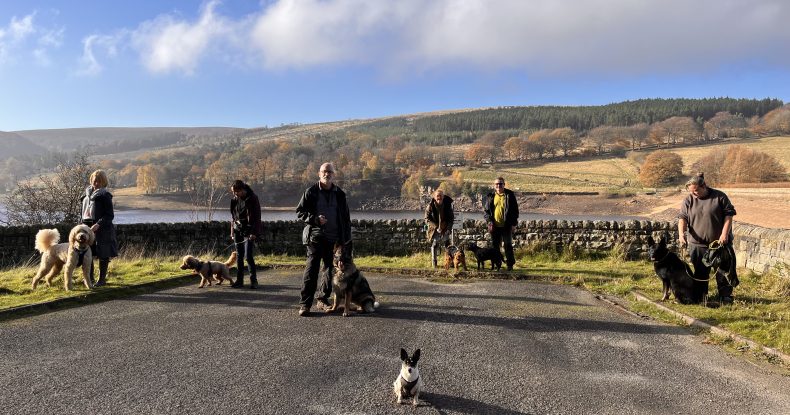Living with a reactive dog can be challenging, both for the dog and their human companions. Reactive behaviour, such as barking, lunging, or growling in response to certain triggers, often stems from fear, anxiety, or past trauma, although we also get those gobby dogs who just love the sound of their own voices, alongside over excitement and a lack of patience to getting what they want too!
Whatever reactivity you’re experiencing, whilst training and behaviour modification are essential components of managing reactive dogs, equally important is creating a safe and supportive environment that minimises stress, triggers and practice of the undesirable behaviour.
Today, I want to explore how environmental management can play a crucial role in helping reactive dogs feel more secure, quiet and at ease in their surroundings.
We’ve already taken a look at Understanding Reactive Behaviour, if you missed that, you can read that, where I’ve linked it in for you.
The Role of Environment in Reactive Behaviour:
The environment plays such a significant role in triggering and exacerbating reactive behaviour in dogs. Loud noises, crowded spaces, and unexpected encounters can all contribute to heightened stress levels and reactive responses, so this is especially important if you’re leading an urban life, as your dog might be under more pressure than that of a country dog.
Despite where you live, you can carefully managing your dogs surroundings, and create a calmer, more predictable environment that can support your dog’s emotional well-being and reduce the overwhelm they’re feeling day by day.
Here are a few management strategies you can employ to help your dog in their environment.
- Controlled Exposures: Enroll your dog in classes or structured 1:1 training to gradually expose them to triggers in a controlled way, starting with low-intensity and increasing over time. This desensitisation process helps reduce reactivity by associating triggers with positive experiences, making training and outings more effective in curbing the barking. Though it may cost initially, it’s a worthwhile investment for long-term behavioural improvement.
- Safe Spaces: Create designated safe spaces where your dog can retreat when feeling overwhelmed or anxious. This could be a quiet room, a cozy crate, or a comfortable bed in a secluded area of the house. Or it could be your car, a sniffing spot on a secluded walk or in between your legs as you advocate for them. Providing access to these safe havens allows your dog to self-soothe and regain a sense of control when feeling stressed.
- Routine and Predictability: Establishing a consistent daily routine can massively help in reducing stress and anxiety in reactive dogs. Stick to regular feeding times, walks, and play sessions, and try to maintain a predictable schedule as much as possible. Consistency provides a sense of stability and security, which is especially beneficial for dogs prone to reactive behaviour.
- Avoidance of Triggers: Whenever possible, avoid exposing your dog to known triggers, especially during the early stages of behaviour modification. This may require making adjustments to your walking route, avoiding crowded areas, or using visual barriers to block stimuli that trigger reactive responses. Some people view this as not solving the problem, but as mentioned above, this is merely a trigger free holiday on a temporary basis, whilst we empty their worry buckets and install new, more desirable habits.
- Enrichment and Mental Stimulation: This became such a buzzword and huge part of the industry not so long back but it is so necessary to keep your dog mentally stimulated and engaged with either you or interactive toys, puzzle feeders, and training games. Mental enrichment not only helps prevent boredom but also redirects your dog’s focus away from potential triggers, reducing the likelihood of reactive behaviour. There are a few different kinds f enrichment, but while ever your dog has a job, they’re much less likely to react.
These are just a few, of a long line of helpful strategies you can install for your reactive dog to help them with their environmental management.
It’s all a crucial component of managing reactive behaviour in dogs and by creating a safe and supportive environment that minimises stress and triggers, you can help your pooch feel more secure and at ease in their surroundings.
Combined with proper training and behaviour modification techniques, environmental management can significantly improve the quality of life for them and you and their human family.
With patience, consistency, and a deep understanding of your dog’s individual needs, you can create a peaceful sanctuary where your reactive dog can thrive!
Tune in tomorrow for A Guide to Understanding Your Dog’s Behaviour. Decoding canine body language
Speak soon,
Claire.
Head Dog Trainer for Reactive Dogs
